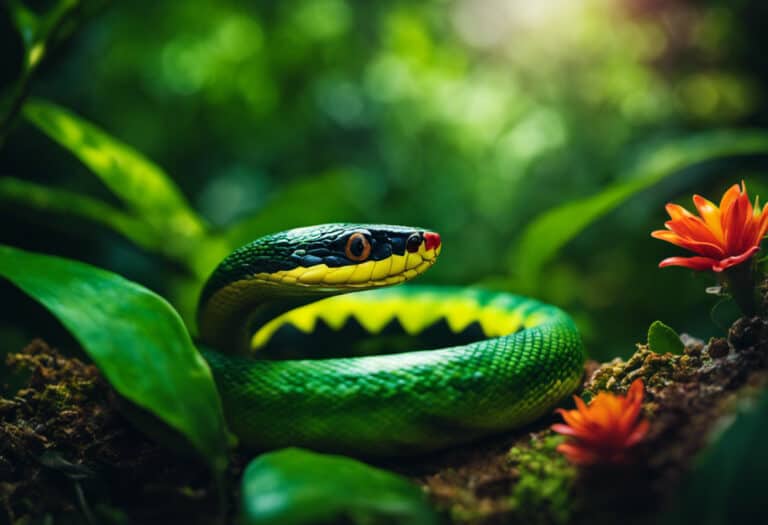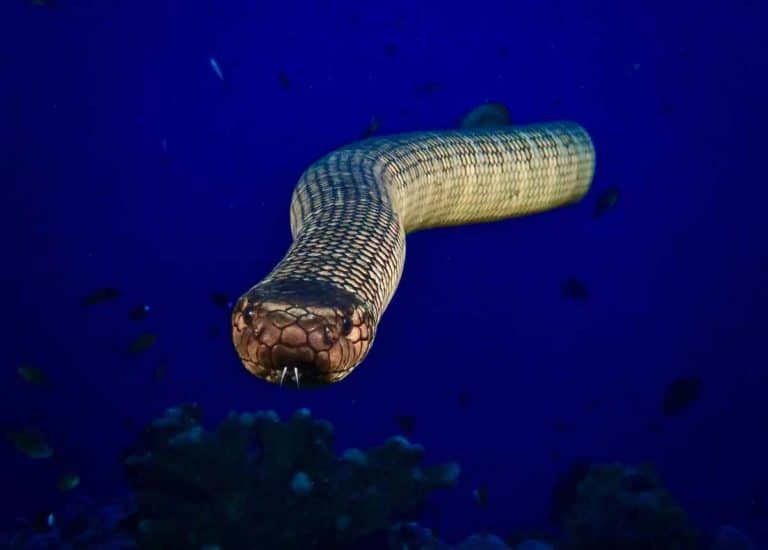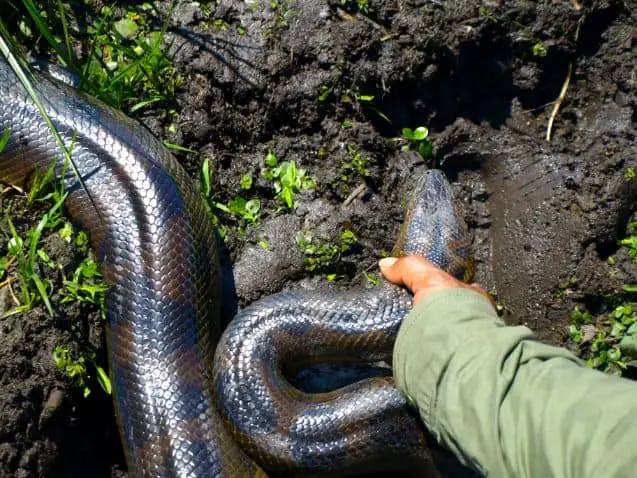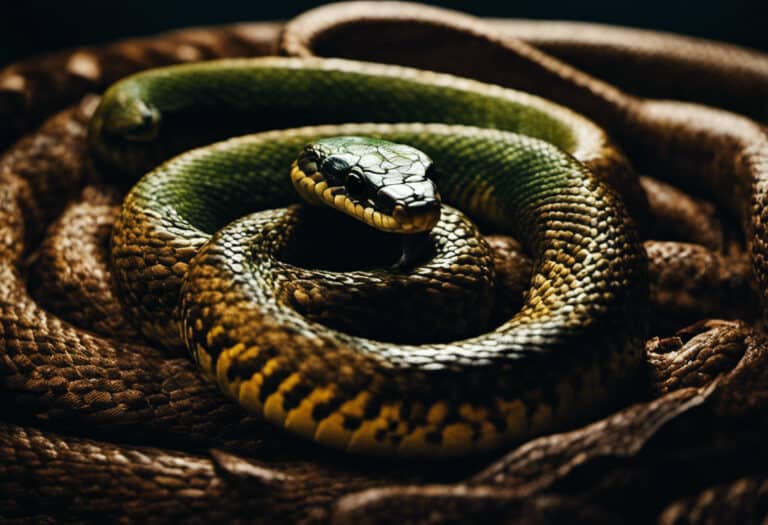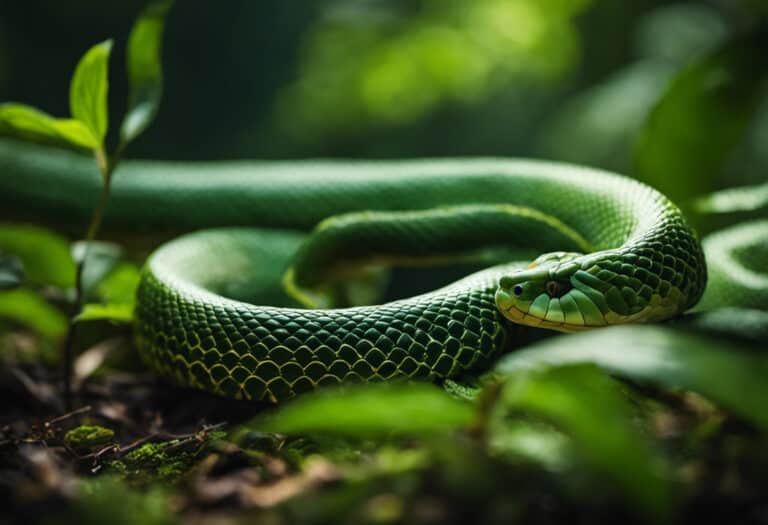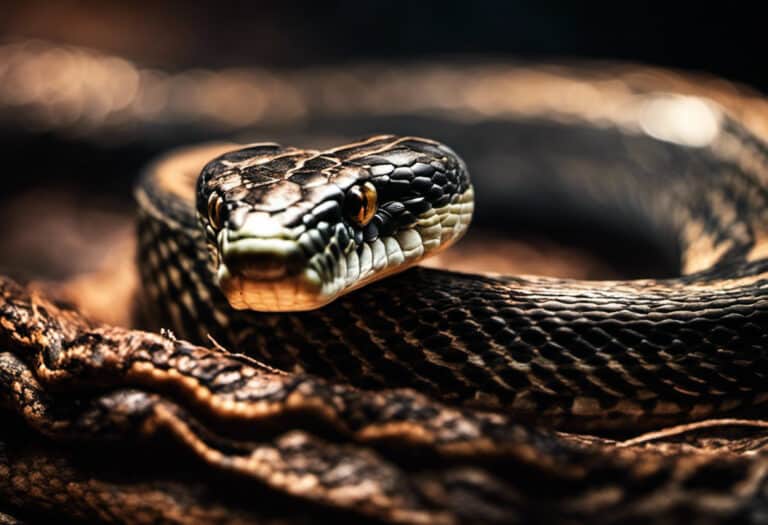Unveiling the Mystery: What Senses Do Snakes Have?
Snakes are fascinating creatures that have evolved unique senses to survive in their respective habitats. These sensory adaptations include sight, hearing, smell, taste, and touch, which allow these creatures to navigate their surroundings and fulfill their ecological roles.
Key Takeaways:
- Snakes have five main senses: sight, hearing, smell, taste, and touch.
- Their sense of touch is highly developed due to their elongated bodies and constant contact with the ground.
- Snakes use their tongues and Jacobson’s organ to pick up scent particles and perceive their environment.
- Internal ears allow snakes to pick up low-frequency vibrations, and their vision varies depending on the species.
- Some snakes have infrared vision and heat-sensitive pits for detecting body heat, which aid in locating prey.
Sense of Touch in Snakes
The sense of touch is highly developed in snakes, as their bodies are equipped with numerous tactile receptors that are highly sensitive to changes in the environment. Snakes use their sense of touch to detect movement and vibrations in their surroundings, helping them hunt and avoid predators. Their elongated bodies are in constant contact with the ground, allowing them to feel the slightest disturbances in their path.
Snakes also use their sense of touch to navigate their environment and locate prey. They can sense the texture and temperature of their surroundings, allowing them to find their way through dark crevices and other obstacles. Snakes can also detect vibrations from the movements of nearby animals, helping them locate potential prey.
| Snake Tactile Receptors | Location | Description |
|---|---|---|
| Scales | Body surface | Contain sensory cells that detect touch and pressure. |
| Jacobson’s Organ | Nasal cavity | Detects airborne chemicals and pheromones. |
| Lateral Line System | Along the body | Contains receptors that detect water movements and vibrations. |
In addition to their tactile receptors, snakes also rely on their environment to sense changes in temperature and locate prey. They can detect heat signatures using specialized organs, such as pit organs, which are found on the heads of certain snake species. These organs allow snakes to locate prey several meters away, even in complete darkness.
Overall, the sense of touch is crucial for the survival of snakes in their natural habitats. Their highly developed tactile receptors and specialized organs allow them to navigate their environment, locate prey, and avoid predators.
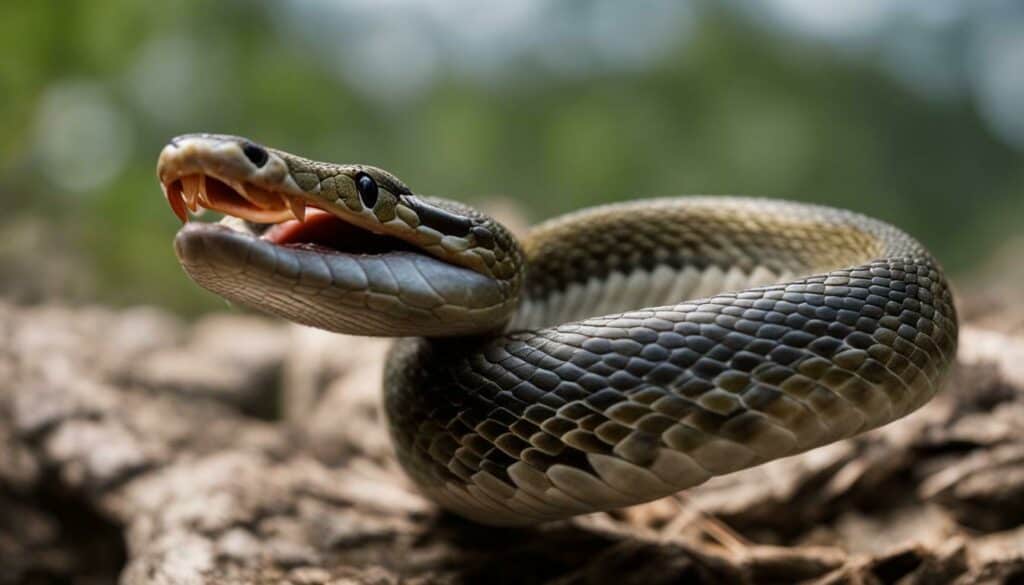
Sense of Smell in Snakes
Snakes have an excellent sense of smell, which compensates for their poor eyesight and limited hearing. This sense allows them to navigate their environment and locate prey. Their sense of smell is highly advanced, and they use it to detect chemicals in the atmosphere or on the ground. Once the scent particles are collected by their forked tongues, they are transferred to a special sensory organ called Jacobson’s organ for perception. This organ is located on the roof of their mouths and allows them to analyze the chemical composition of scents.
Snakes can detect scent particles in the air or on the ground with great accuracy, and many species use this sense to hunt. For example, pit vipers can detect the scent of prey from great distances, allowing them to track and capture it. Furthermore, snakes can differentiate between different types of scents, making it easier for them to locate specific prey or detect predators.
Their chemosensory perception is so advanced that some snake species can even detect pheromones, which are chemical signals given off by other animals. This ability helps them locate mates and communicate with other snakes.
Overall, the sense of smell plays a crucial role in the survival and hunting abilities of snakes. Their chemical detection abilities are so finely tuned that they can detect scents at extremely low concentrations. Their olfactory sense is an integral part of their sensory system, and their survival depends on it.
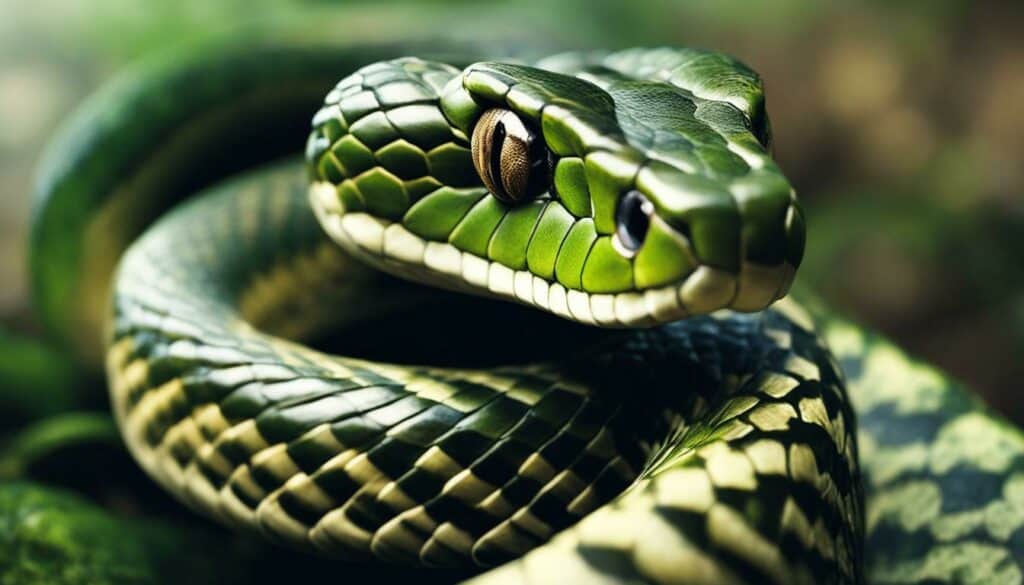
Snake Vision and Hearing
Snake eyes are covered and protected by a transparent scale called a brille, and their vision is not as keen as that of humans. However, some species of snakes have color vision, especially tropical ones. They can also see movement and distinguish between light and dark, which allows them to track prey and avoid predators. Snakes do not have eyelids, so they cannot blink or close their eyes completely. Instead, they have a fixed stare, which may contribute to their reputation as cold-blooded and calculating.
While snakes do not have external ears, they have powerful internal ears that pick up low-frequency vibrations. They can sense the movements of larger animals and other predators, such as birds of prey, which allows them to evade danger and find a secure place to hide. This sense of hearing is essential for snakes, as it helps them survive in different environments.
Overall, snake vision and hearing capabilities vary across species and are not as advanced as those of other animals. However, snakes do not rely solely on these senses, and they have other ways of perceiving the world around them that compensate for their limitations.

Sense of Infrared Detection in Snakes
In addition to their visual senses, some snake species have the ability to detect infrared radiation, allowing them to see the body heat of objects and prey around them. This unique sense is made possible by specialized heat-sensitive pit organs that are equipped with TRPA1 channels, which are sensitive to temperature changes, and can detect infrared radiation as heat inside these organs.
The heat-seeking ability of pit vipers, such as rattlesnakes, is up to 10 times keener than other snake species. This remarkable sense of infrared detection is a major advantage for pit vipers when it comes to locating and hunting warm-blooded animals, even in complete darkness.
This ability has allowed snakes to become skilled predators, adapting to different environments and surviving in conditions that would be impossible for other animals.
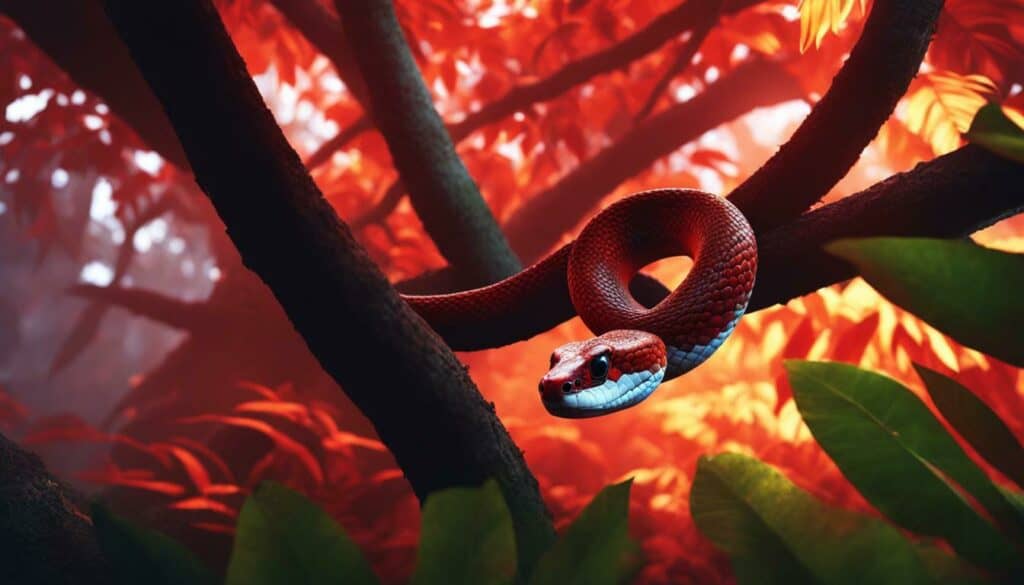
Through the development of infrared detection, snakes have evolved to become efficient hunters, helping to regulate ecosystems and maintain balance in the natural world.
Unraveling the Mystery of Snake Senses
Overall, the senses of snakes have evolved over millions of years to help them survive and play a crucial role in maintaining a balance between predator and prey in ecosystems. Snakes have adapted to their environments through their senses of touch, smell, vision, hearing, and even infrared detection.
Snakes have highly developed touch senses, with tactile receptors located all over their body to detect movement and vibrations in their surroundings. This allows them to be highly sensitive to changes in their environment and detect potential prey or danger.
Snakes also have an excellent sense of smell and taste, using their tongues to collect chemicals from the atmosphere or ground. This ability enables them to navigate their environment and locate prey with ease. For example, some species of snake can detect the scent of rodents from very long distances.
While snakes lack external ears, they possess powerful internal ears that can detect low-frequency vibrations. This helps snakes detect sounds from their surroundings, which is crucial for communication and detecting predators.
Snake Vision
Snakes’ eyesight varies depending on their species and habitat, with nocturnal snakes having vertical pupils and ground-dwelling snakes seeing objects clearly at short distances. Some species of snakes even have color vision and infrared vision, which is the ability to detect heat. Infrared vision is particularly useful for certain snake species, as it allows them to detect the body heat of potential prey.
Snake Sensory Adaptations
Snakes’ sensory adaptations have played a significant role in their survival throughout history. Their unique senses have helped them adapt to a wide range of habitats and environments, enabling them to find mates, detect prey, and ward off danger. Understanding snake senses is crucial for appreciating their role in maintaining a healthy ecosystem and environment.
Overall, snake senses are mystifying and fascinating. Their sensory abilities have evolved over millions of years to help them survive and thrive in their environments. From the highly developed sense of touch to infrared detection, the senses of snakes play a crucial role in maintaining the ecological balance between predator and prey in ecosystems.
FAQ
Q: What senses do snakes have?
A: Snakes possess five main senses – sight, hearing, smell, taste, and touch – which allow them to find mates, detect prey, and protect themselves from danger.
Q: How do snakes use their sense of touch?
A: Snakes have numerous tactile receptors that are highly sensitive to changes in the environment. This allows them to sense vibrations and movement around them.
Q: How do snakes use their sense of smell?
A: Snakes use their tongues to collect chemicals from the atmosphere or ground, and their forked tongues allow them to gather scent particles from the surrounding air. These particles are then transferred to a structure called Jacobson’s organ, located on the roof of their mouths, for perception.
Q: What are the visual capabilities of snakes?
A: Snake eyes are covered and protected by a transparent scale called a brille, and their vision is not as keen as that of humans. However, different snake species have different visual capabilities, depending on their hunting habits and time of activity.
Q: How do snakes detect infrared radiation?
A: Certain snake species, such as pit vipers, possess heat-sensitive pit organs on their faces that can detect temperature changes as slight as three thousandths of a degree Celsius. This allows them to sense the body heat of objects and prey around them.
Q: What is the role of snake senses in ecosystems?
A: Snake senses play a crucial role in maintaining a balance between predator and prey in ecosystems. Their unique sensory adaptations allow them to thrive in various environments and contribute to the natural world.
